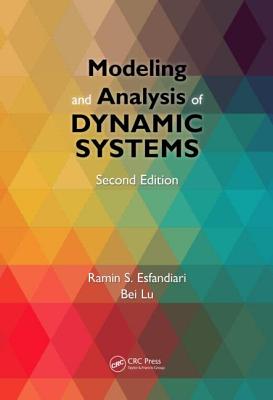Modeling and Simulation of Mechatronic Systems using Simscape
暫譯: 使用 Simscape 進行機電系統的建模與模擬
Das, Shuvra
- 出版商: Morgan & Claypool
- 出版日期: 2020-03-10
- 售價: $3,200
- 貴賓價: 9.5 折 $3,040
- 語言: 英文
- 頁數: 171
- 裝訂: Hardcover - also called cloth, retail trade, or trade
- ISBN: 1681737361
- ISBN-13: 9781681737362
-
相關分類:
控制系統 Control-systems
海外代購書籍(需單獨結帳)
相關主題
商品描述
Mechatronic Systems consist of components and/or sub-systems which are from different engineering domains. For example, a solenoid valve has three domains that work in a synergistic fashion: electrical, magnetic, and mechanical (translation). Over the last few decades, engineering systems have become more and more mechatronic. Automobiles are transforming from being gasoline-powered mechanical devices to electric, hybrid electric and even autonomous. This kind of evolution has been possible through the synergistic integration of technology that is derived from different disciplines. Understanding and designing mechatronic systems needs to be a vital component of today's engineering education. Typical engineering programs, however, mostly continue to train students in academic silos (otherwise known as majors) such as mechanical, electrical, or computer engineering. Some universities have started offering one or more courses on this subject and a few have even started full programs around the theme of Mechatronics. Modeling the behavior of Mechatronic systems is an important step for analysis, synthesis, and optimal design of such systems. One key training necessary for developing this expertise is to have comfort and understanding of the basic physics of different domains. A second need is a suitable software tool that implements these laws with appropriate flexibility and is easy to learn.
This short text addresses the two needs: it is written for an audience who will likely have good knowledge and comfort in one of the several domains that we will consider, but not necessarily all; the book will also serve as a guide for the students to learn how to develop mechatronic system models with Simscape (a MATLAB tool box). The book uses many examples from different engineering domains to demonstrate how to develop mechatronic system models and what type of information can be obtained from the analyses.
商品描述(中文翻譯)
機電系統由來自不同工程領域的元件和/或子系統組成。例如,電磁閥具有三個協同運作的領域:電氣、磁性和機械(轉換)。在過去幾十年中,工程系統變得越來越機電化。汽車正在從以汽油為動力的機械裝置轉變為電動、混合電動甚至自動駕駛。這種演變得以實現,正是通過來自不同學科的技術的協同整合。理解和設計機電系統需要成為當今工程教育的重要組成部分。然而,典型的工程課程大多仍然在學術孤島(即專業)中訓練學生,例如機械工程、電氣工程或計算機工程。一些大學已經開始提供一門或多門關於這個主題的課程,甚至有幾所大學開始圍繞機電一體化主題開設完整的課程。對機電系統行為的建模是分析、綜合和最佳設計這些系統的重要步驟。發展這種專業知識所需的一個關鍵訓練是對不同領域基本物理的理解和熟悉。第二個需求是合適的軟體工具,能夠以適當的靈活性實現這些法則,並且易於學習。
這段簡短的文字針對這兩個需求:它是為那些在我們將考慮的幾個領域中可能擁有良好知識和舒適度的讀者而寫的,但不一定是所有領域;本書還將作為學生學習如何使用Simscape(MATLAB工具箱)開發機電系統模型的指南。本書使用來自不同工程領域的許多例子來演示如何開發機電系統模型以及從分析中可以獲得什麼類型的信息。































